Bit.ai
Bit.ai is more than “yet another” document tool; it’s a vibrant hub where teams breathe life into their ideas, and I’m kind of obsessed with how it transforms the mundane task of document creation into something almost, well, fun. Picture a workspace where your team’s scattered thoughts, files, and digital doodads come together in one sleek, organized place. That’s Bit.ai. It’s built for the modern workforce, those folks juggling Google Drive links, Slack threads, and a million browser tabs, all while trying to keep projects on track. The platform’s strength lies in its ability to weave together text, media, and third-party integrations into dynamic, interactive documents that feel alive, not like the static Word docs of yesteryear.
The editor is a standout. It’s intuitive, clean, and lets you drag in everything from YouTube videos to Figma designs without breaking a sweat. The AI Genius feature, Bit’s built-in writing assistant, is like having a clever intern who can whip up templates or polish your prose in seconds. Want to embed a Google Sheet that updates in real time? Done. Need a code block with syntax highlighting for your dev team? Bit’s got you covered. It supports over 100 integrations, from Dropbox to GitHub, making it a central hub for your digital life. Plus, the document tracking feature is a quiet game-changer, letting you see who’s viewed your shared links and how they engaged, which is perfect for client pitches or team updates.
But it’s not all smooth sailing. The free plan, while generous with 50 documents and five team members, can feel restrictive if your team grows or your projects multiply. Some users on platforms like Capterra have noted that the learning curve, while not steep, can trip up folks used to simpler tools like Google Docs. And while Bit.ai’s templates are a godsend for quick starts, they’re not always customizable enough for niche needs, which might frustrate perfectionists. Compared to competitors like Notion or Confluence, Bit.ai shines for its media-rich embeds and tracking, but it lacks the sprawling ecosystem of Notion’s community templates or Confluence’s deep project management integrations.
What surprised me most? The responsive design. Documents look crisp on any device, whether you’re on a laptop or squinting at your phone during a commute. It’s a small detail, but it makes collaboration feel seamless, especially for remote teams. The platform’s ability to create client portals or data rooms also caught my eye, it’s like a secret weapon for freelancers or agencies looking to impress.
For teams drowning in disorganized files or struggling to keep remote collaborators in sync, Bit.ai is a lifeline. It’s not perfect, but it’s close enough to make you wonder why you ever tolerated clunky shared drives. If you’re curious, start with the free plan and play around with a few templates. Invite a couple of colleagues to collaborate on a doc, embed a video or two, and see how it feels to work in a space that’s as dynamic as your team’s ideas. Just don’t be surprised if you get hooked.
Video Overview ▶️
What are the key features? ⭐
- Smart Editor: Auto-formats text and media for responsive, professional documents.
- AI Genius: Assists with drafting, refining, and generating custom templates.
- Rich Embeds: Supports over 100 integrations, including Google Sheets and YouTube.
- Document Tracking: Provides analytics on viewer engagement with shared links.
- Workspace Management: Allows creation of unlimited workspaces with customizable permissions.
Who is it for? 🤔
Examples of what you can use it for 💭
- Marketing Team: Creates interactive campaign proposals with embedded videos and trackable links.
- Educator: Builds resource pages with integrated study guides and live Google Docs for students.
- Freelancer: Designs client portals with branded documents and real-time collaboration features.
- Developer: Embeds code blocks and GitHub links in technical wikis for team reference.
- HR Manager: Organizes company-wide wikis with training materials and secure guest access.
Pros & Cons ⚖️
- Easy-to-use editor with auto-formatting
- Supports 100+ app integrations
- Detailed document tracking insights
- Free plan limits to 50 documents
- Limited template customization
FAQs 💬
Related tools ↙️
-
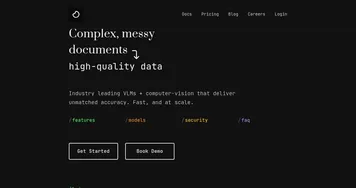 Chunkr
Transforms complex documents into structured chunks for RAG and LLM applications
Chunkr
Transforms complex documents into structured chunks for RAG and LLM applications
-
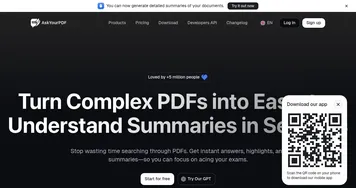 AskYourPdf
An AI assistant that uses data from PDFs that you upload
AskYourPdf
An AI assistant that uses data from PDFs that you upload
-
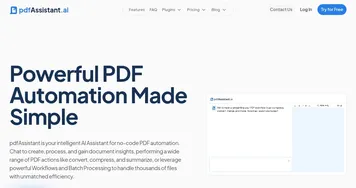 pdfAssistant
An AI tool that acts like a chatty intern who's freakishly good at handling PDFs
pdfAssistant
An AI tool that acts like a chatty intern who's freakishly good at handling PDFs
-
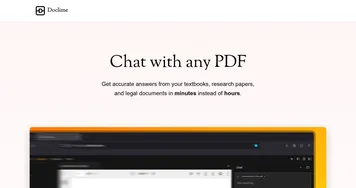 DocLime
Instead of searching, import your PDFs and let AI provide you with instant answers
DocLime
Instead of searching, import your PDFs and let AI provide you with instant answers
-
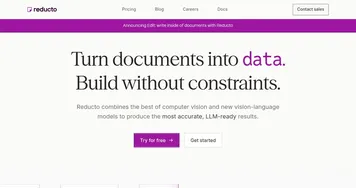 Reducto
Converts complex documents into structured data for AI applications
Reducto
Converts complex documents into structured data for AI applications
-
 Summarist.ai
Generates concise book summaries using advanced AI technology
Summarist.ai
Generates concise book summaries using advanced AI technology

